Total Return Approach vs. the Bucket Strategy
Looking for ways to create steady income in retirement? We discuss two main strategies to consider when retirement income planning. Read on for details about the total return approach and the bucket strategy for creating retirement income.
Presented by: Kris Maksimovich, AIF®, CRPC®, CPFA®, CRC®
Most working Americans have only one source of steady income before they retire: their jobs. When you retire, however, your income will likely come from a number of sources, such as retirement accounts, social security benefits, pensions, and part-time work. This bucket strategy is one of a couple that you may use.
Retirement Income Planning
During retirement planning, when deciding how to manage your various assets to ensure a steady retirement income stream, there are two main strategies to consider: the total return approach and the investment pool—or bucket—approach.
The total return approach
With the total return approach, you invest your assets in a diversified portfolio of investments with varying potential for growth, stability, and liquidity. The percentage you allot to each type of investment depends on your asset allocation plan, time horizon, risk tolerance, need for income, and other goals.
The objective of your investment portfolio generally changes over time, depending on how close you are to retirement:
- Accumulation phase. During the accumulation phase, your portfolio’s objective is to increase in value as much as possible, with a focus on investments with growth potential.
- Approaching retirement-age phase. As you near retirement, your portfolio becomes more conservative, moving toward more stable and liquid assets in order to help preserve your earnings.
- Retirement phase. Once you retire, the idea is to withdraw from your portfolio at an even rate that allows you to enjoy a sustainable lifestyle.
Traditionally, a widely quoted withdrawal rate for the first year of retirement has been 4 percent. Ideally, that 4 percent should be equal to the amount left over after you subtract your yearly retirement income (e.g., pensions, social security, and so on) from your total cost of living, including investment management fees. Each year, you will most likely increase your withdrawal percentage to keep up with inflation. Keep in mind, however, that the appropriate withdrawal rate for you will depend on your personal situation as well as the current economic environment.
The bucket strategy
The bucket approach also begins with a diversified portfolio, following the total return approach throughout most of the accumulation period. Then, as retirement approaches, you divide your assets into several smaller portfolios (or buckets), each with different time horizons, to target specific needs.
There is no “right” number of buckets, but three is fairly common. In a three-bucket scenario:
- The first bucket would cover the three years leading up to retirement and the two years following retirement, providing income for near-term spending. It would likely include investments that have historically been relatively stable, such as short-term bonds, CDs, money market funds, and cash.
- The second bucket would be used in years three through nine of retirement. Designed to preserve some capital while generating retirement income, it would include more assets with growth potential, such as certain mutual funds and dividend-paying stocks.
- The third bucket, designated to provide income in year 10 and beyond, would contain investments that have the most potential for growth, such as equities, commodities, real estate, and alternatives. Although the risk profile of this bucket is typically higher than the other two, its longer time horizon can help provide a buffer for short-term volatility.
As you enter the distribution phase, you draw from these buckets sequentially, using a withdrawal rate based on your specific lifestyle goals in a particular year.
The big picture with the bucket strategy
Many people are familiar with the total return approach, but the bucket approach has been gaining popularity recently, thanks in large part to its simplicity. It also accounts for different time periods during retirement, potentially allowing you to allocate money more effectively based on your personal situation.
Perhaps the greatest benefit of the bucket approach is that it can help provide a buffer during times of market volatility. For example, if the value of the investments in buckets two and three suddenly fluctuates due to market conditions, your immediate cash income is coming from bucket one, which is likely to be less volatile. This may also alleviate the need to sell investments that have lost money in order to generate retirement income.
Of course, while the bucket approach has its advantages, some investors simply feel more comfortable using the total return approach. Remember, the best strategy for your retirement is unique to you and your personal preferences and needs. However you choose to pursue your retirement dreams, it’s important to work with a financial professional who can help you create the most appropriate strategy based on your goals and situation.
Contact us today to learn more about the different paths you may take to pursue a sustainable and enjoyable retirement.
Diversification does not assure against market loss, and there is no guarantee that a diversified portfolio will outperform a non-diversified portfolio.
Kris Maksimovich is a financial advisor located at Global Wealth Advisors 4400 State Hwy 121, Ste. 200, Lewisville, TX 75056. He offers securities and advisory services as an Investment Adviser Representative of Commonwealth Financial Network®, Member FINRA/SIPC, a Registered Investment Adviser. Financial planning services offered through Global Wealth Advisors are separate and unrelated to Commonwealth. He can be reached at (972) 930-1238 or at info@gwadvisors.net.
© 2025 Commonwealth Financial Network®
Latest News
How much does college really cost?
April 2, 2025
How Much Does Your Bracket Pick Really Cost? We hope you're just as excited as we were for this year’s March Madness Tournament and finally getting down to F...
READ MORE...Big News for Retirees: Social Security Fairness Act Repeals WEP and GPO
March 27, 2025
If you or your spouse have worked in both the public and private sectors—or if you’re currently drawing a government pension—there’s important news that...
READ MORE...Managing Taxes on Your Investments
February 19, 2025
Presented by Scott Portlock CFP®, CLU® When it comes to your money, it’s not what you earn, it’s what you keep. Here are some ideas that may help le...
READ MORE...Loading...






